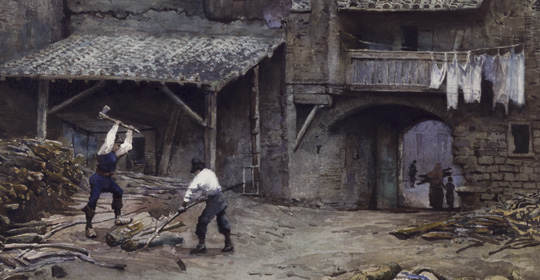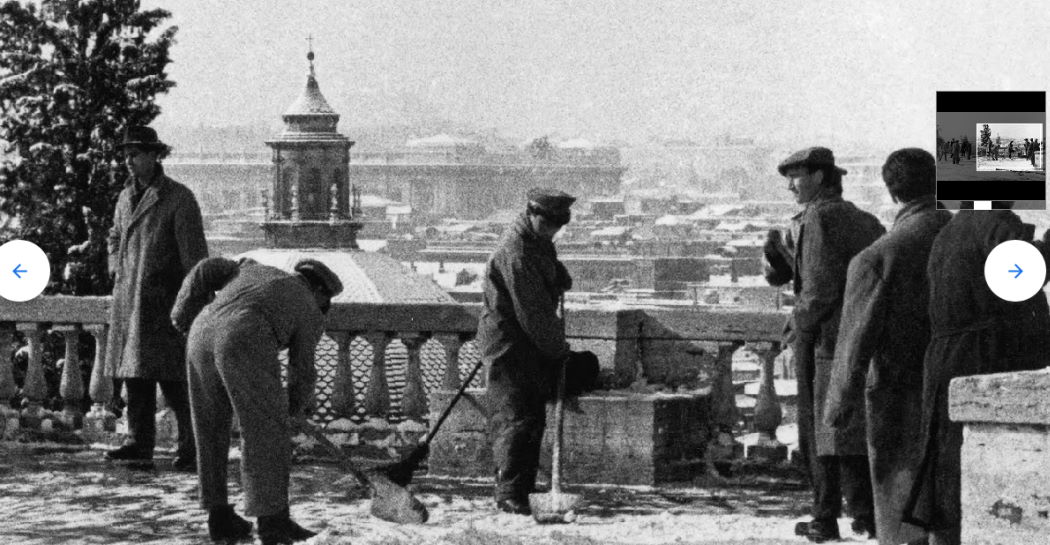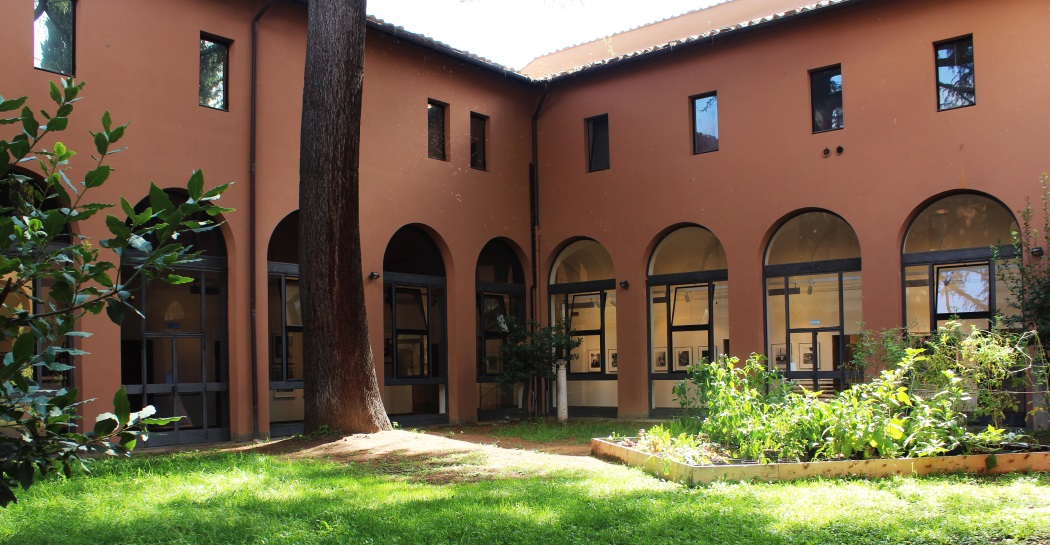The "Roma sparita" series by Ettore Roesler Franz
In 1881 Roesler Franz exhibited sixteen Vedute, that is to say views, of the Tiber in his studio at piazza San Claudio 96. These works constitute the first nucleus of the series called Roma Pittoresca, or Picturesque Rome, as the painter himself had called it, but that later came to be better known as Roma sparita or the Rome that is no more. In 1883 he took part in an exhibition at Palazzo delle Esposizioni with the first series of forty watercolours that were put on show in the Sala dell’Architettura. The City Council allotted fifty thousand lire for the purpose of purchasing some of the works exhibited. Mayor Leopoldo Torlonia himself dealt with the purchase that cost the Municipality eighteen thousand lire. The operation was openly criticised both for its high cost and because the commission nominated for the purpose of choosing what to buy was presided of by the Mayor himself and was considered not to be up to the task. In 1884 he exhibited the series of forty watercolours at the Società degli Amatori e Cultori delle Belle Arti, where in 1891 he exhibited some of the same works again. In 1888 the first series of watercolours was exhibited in Berlin and then in Vienna in 1890. The second and third of the Roma Pittoresca series were exhibited in 1897 in the foyer of the Teatro Drammatico Nazionale. In 1904 some works from the Roma Pittoresca series were exhibited at the Italian Exhibition in London. In 1908 the Municipality of Rome bought the second and the third series (eighty works) of Roma Pittoresca. The idea of buying them was first put forward at a Municipal meeting in 1897, and then again in 1902 and 1904 with the idea of exhibiting these works in the Museo Topografico that was planned at palazzo degli Anguillara. In however proved necessary to wait until 1908 when, after some somewhat heated meetings on 24 and 25 April, the proposal was approved in the presence of Mayor Nathan. The 120 paintings were first put in the palazzetto della Farnesina ai Baullari.
In 1911 the three series of the Roma Pittoresca were exhibited in CAstel Sant’Angelo in occasion of the Esposizione Internazionale di Roma. In 1929 the watercolours were taken to the building that was once the Pantanella pasta factory at piazza Bocca della Verità, where they were exhibited the following year in the newly opened Museo di Roma. In 1952 the one hundred and twenty watercolours were moved to a new location for the Museo di Roma at Palazzo Braschi in piazza San Pantaleo. In 1980 a part of them was moved to what was then called the Museo del Folklore and is now called Museo di Roma in Trastevere.





































